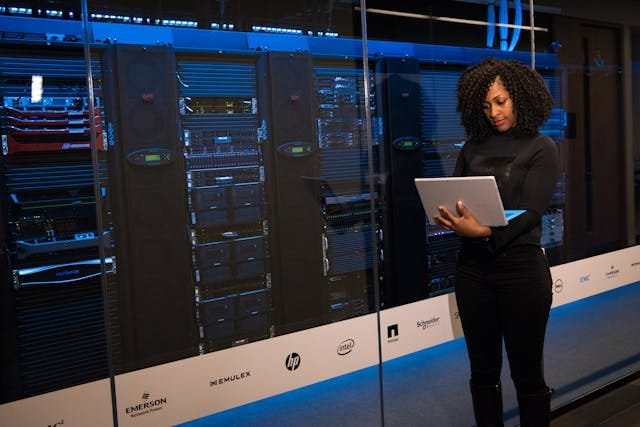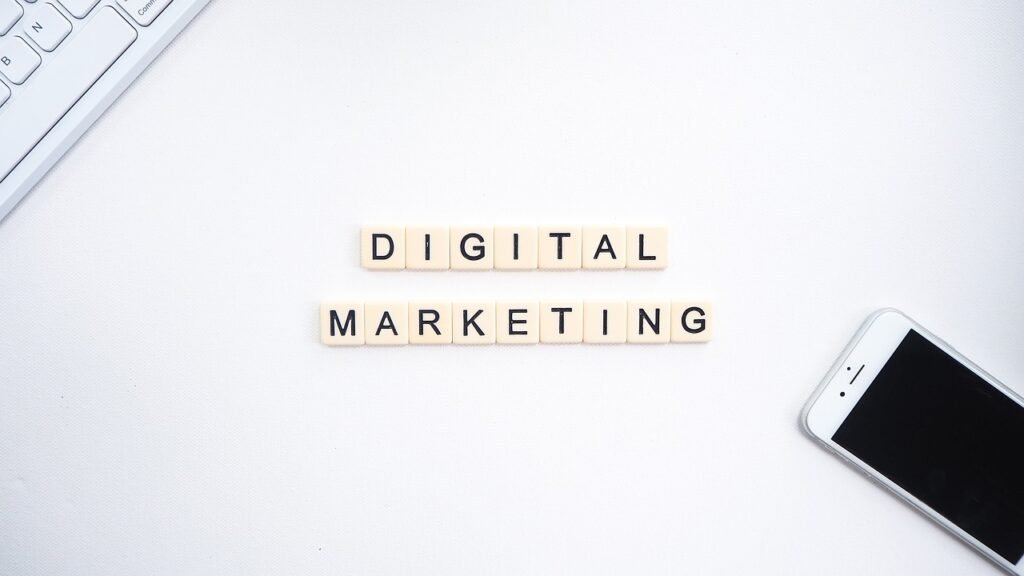In a world dominated by digital-first strategies, trade shows might seem like a relic of the past. But guess what? They’re far from irrelevant. In fact, when done right, trade shows can be the ace up your sleeve in your B2B marketing strategy. They offer something that digital campaigns can’t always deliver: real, face-to-face human connections. Let’s dive into how trade shows can blend seamlessly with your digital-first approach and help you make a lasting impact.
Why Trade Shows Still Matter in a Digital World

In today’s fast-paced digital environment, startup founders might be tempted to allocate their entire marketing budgets toward online campaigns. It’s a natural inclination—digital marketing is measurable, scalable, and cost-effective. But trade shows offer unique advantages that are difficult, if not impossible, to replicate in the digital space. For startups, these events can serve as a launchpad for building not only awareness but also long-term relationships.
Trade shows provide an invaluable opportunity to make a splash in your industry, especially if you’re a newcomer. Unlike digital ads that can blend into the noise, a well-executed trade show booth gives you a stage to tell your story in an impactful way.
Imagine being able to showcase your product while directly engaging decision-makers. The conversations you have face-to-face carry more weight than the hundreds of impressions you might earn online. This is because people crave authenticity, and live interactions offer the perfect platform to build trust instantly.
For startups with a tight budget, trade shows can seem like a large expense, but they’re also a chance to maximize ROI through concentrated effort. In a matter of days, you can meet dozens of potential clients, partners, and investors—all under one roof.
That’s not just exposure; it’s efficiency. Consider the costs of arranging individual meetings with these same contacts over weeks or months—it’s far greater than participating in a single trade show. With a solid pre-show and post-show plan, the leads you gather can turn into substantial business opportunities.
Trade shows are also the perfect testing ground for your product messaging and positioning. If you’re a startup founder, you’ve likely spent countless hours refining your value proposition. But how does it land with a live audience? Engaging with people face-to-face allows you to gauge their immediate reactions.
Are they intrigued? Confused? Enthusiastic? This real-time feedback is a goldmine for fine-tuning your messaging. The insights you gather at a trade show can help you refine your pitch—not only for future events but also for your digital campaigns.
Another aspect where trade shows excel is the human element of branding. A strong online presence is essential, but it’s easy for even the most innovative startups to feel impersonal behind screens. Trade shows let you showcase your brand’s personality and culture.
The way your team interacts with attendees, the design of your booth, and even small details like giveaways or demonstrations all contribute to how your brand is perceived. For startups trying to differentiate themselves, this personal touch can leave an indelible mark.
For industries where trust is a major decision-making factor, trade shows also serve as credibility boosters. Simply having a presence at an industry-leading event signals that your startup is serious about making an impact.
You’re sharing the stage with established players, and this association lends you a degree of legitimacy that’s difficult to achieve through digital channels alone. When attendees see you alongside well-known brands, they’re more likely to view you as a contender in the market.
Another strategic benefit of trade shows is the potential for partnerships. For startups, forming alliances can be just as important as acquiring customers. Whether it’s identifying complementary businesses for joint ventures or finding suppliers to streamline your operations, the connections you make at trade shows can lead to synergies that drive your startup’s growth.
These partnerships often begin with informal conversations at booths or networking events and evolve into significant business relationships.
Finally, trade shows offer unparalleled opportunities to monitor industry trends. As a startup founder, staying ahead of the curve is non-negotiable. Walking the exhibition floor allows you to see what competitors are doing, identify emerging trends, and spot gaps in the market.
This kind of reconnaissance can be a strategic advantage as you refine your product, develop your roadmap, or adjust your market positioning.
How to Integrate Trade Shows into Your Digital-First Strategy

Integrating trade shows into a digital-first strategy isn’t about choosing one over the other; it’s about weaving them together to amplify their impact. For startup founders, this requires a strategic and tactical approach that maximizes both channels. The goal is to create a seamless experience where the momentum generated by your digital efforts carries into the trade show and extends long after the event.
Start by designing your trade show strategy around a core narrative that aligns with your digital messaging. This narrative should address your audience’s key pain points and demonstrate how your solution solves them.
Every touchpoint, from your trade show booth to your digital ads, should reinforce this story. For instance, if your digital campaigns highlight your software’s ability to streamline workflows, your booth should feature live demos or interactive displays that show exactly how it’s done.
A pre-show content strategy is essential. Use your digital channels to create excitement and establish your presence before the event.
This can include publishing blog posts that highlight what attendees can expect, sharing thought leadership content relevant to the event’s themes, or hosting webinars that tie into the topics being discussed at the show. By positioning your brand as a valuable resource beforehand, you increase the likelihood that attendees will prioritize visiting your booth.
Personalization is key to bridging the gap between digital and in-person interactions. Use your CRM and marketing automation tools to segment your audience and tailor your pre-show outreach.
For instance, if you know certain leads are attending, send them a personalized invitation to visit your booth, complete with a time to discuss their specific needs. This creates a sense of exclusivity and ensures your time at the event is spent with the most valuable prospects.
Don’t overlook the role of digital advertising in driving booth traffic. Paid social media campaigns targeting attendees can be a powerful tool. Platforms like LinkedIn and Facebook often allow you to target users by event participation or job titles, making it easier to reach decision-makers who will be at the show. Combine this with geofencing ads that trigger location-based notifications to attendees near the venue, reminding them to visit your booth.
On the show floor, integrate digital tools to enhance the visitor experience. QR codes, for example, can connect attendees to landing pages with additional information, videos, or downloadable resources.
An interactive touchpoint like this not only saves time during a busy event but also creates a digital trail for you to follow up on later. Encourage attendees to engage digitally by running contests or offering exclusive content that requires them to scan a code or sign up online.
While trade shows are often about face-to-face engagement, your digital presence should remain active during the event. Assign a team member to live-tweet insights, post updates on LinkedIn, and share highlights on Instagram Stories.
This real-time engagement extends your reach beyond the event’s physical attendees to your broader online audience. It also keeps your brand top of mind for those at the event who might be scrolling through their feeds between sessions.
The integration doesn’t stop when the event ends. Use your digital platforms to immediately nurture the relationships you’ve started. A well-timed thank-you email referencing your booth interaction can be a simple yet effective way to stand out. For leads who showed strong interest, create targeted campaigns that provide deeper insights into your solution, such as case studies or ROI calculators tailored to their industry.
Incorporate trade show insights into your broader marketing strategy. The feedback you gather on the floor—whether through direct conversations or observing audience behavior—can inform your future digital campaigns.
For example, if you find attendees consistently asking the same question about your product, create a blog post or FAQ page that addresses it. If a specific demo garners the most attention, consider turning it into a webinar or video ad.
Lastly, don’t underestimate the value of data integration. Sync the leads and data collected during the trade show with your CRM and marketing automation platforms to create cohesive follow-up campaigns. Analyze patterns, such as which digital touchpoints preceded a successful booth visit, to optimize your efforts for future events.
Making the Most of the Event

Maximizing your trade show presence requires more than just showing up and setting up a booth. For startup founders, it’s about strategically leveraging every moment of the event to amplify your visibility, build relationships, and leave a lasting impression.
While the preparation and follow-up are critical, the time spent on the trade show floor is where your planning meets execution, and how you act during this time can make or break your success.
Start by treating your booth as a dynamic hub rather than a static space. A booth isn’t just about showcasing products; it’s about creating an immersive experience. Instead of relying solely on passive displays or brochures, design your space to engage the senses and spark curiosity.
Consider live demonstrations, interactive screens, or even a storytelling session where you share your startup’s journey and vision. Make your booth a destination rather than just another stop on the trade show map.
Your team is your most valuable asset during the event. Equip them with a clear understanding of your goals and ensure they’re trained to engage effectively. Encourage them to approach attendees proactively, rather than waiting for visitors to come to the booth.
However, the key is to engage in meaningful conversations, not hard sells. Teach your team to ask insightful questions that uncover the attendee’s pain points and priorities. These interactions should feel like consultations, not pitches.
For startup founders, trade shows are an unparalleled opportunity to build credibility. Establish yourself as a thought leader by participating in speaking opportunities or panel discussions if available. Being on stage gives you authority and provides attendees with a reason to visit your booth afterward.
If speaking slots aren’t an option, host micro-sessions or workshops at your booth to share actionable insights related to your industry. These sessions should align with your broader digital content strategy, reinforcing your brand message across multiple channels.
Networking is another area where you can differentiate yourself during the event. While most people focus on potential clients, savvy founders know the value of building relationships with other exhibitors and industry leaders. Seek out opportunities to collaborate, whether it’s through co-hosting a panel, sharing resources, or exploring partnership opportunities. Remember, trade shows aren’t just about selling; they’re about connecting.
Every interaction at a trade show is an opportunity to create a memorable impression. This goes beyond the conversations at your booth. Think about how you present your brand throughout the event.
Wear branded apparel, distribute high-quality materials, and ensure that even your giveaways are thoughtfully chosen to reflect your values and stand out. A generic pen won’t cut it—find something that aligns with your brand’s personality and adds value to the recipient.
Data collection during the event is as important as the conversations themselves. However, collecting data is not just about volume but also about quality. Use digital tools to capture details efficiently, but focus on meaningful interactions rather than chasing every visitor.
For example, instead of just gathering email addresses, take notes about the specific challenges or interests of the people you speak with. This context will be invaluable when you follow up after the event.
As a founder, you should also take a step back periodically to observe and analyze the dynamics of the trade show. Pay attention to the flow of attendees and notice what draws people to certain booths.
Observe how competitors are positioning themselves and the type of conversations they’re having. These insights can provide inspiration for adjusting your strategy in real-time or refining your approach for future events.
Lastly, don’t underestimate the importance of staying energized and present. Trade shows can be overwhelming, with long hours and constant interactions. As a startup founder, your enthusiasm sets the tone for your team and visitors. Take breaks as needed to recharge and encourage your team to do the same. A fresh, enthusiastic demeanor will always leave a better impression than a tired or disengaged one.
Turning Trade Show Leads into Digital Success

Converting trade show leads into tangible business opportunities is where the true ROI of your participation lies. For startup founders, this stage requires precision, personalization, and a well-executed digital strategy to maintain momentum and nurture relationships. Trade shows are a concentrated burst of interaction and energy, but their success is only realized when those initial connections are translated into meaningful outcomes.
The first step in turning leads into success is acting quickly. The longer you wait to follow up, the colder the leads become. Within 24 to 48 hours of the trade show ending, initiate your outreach. However, avoid sending generic emails that lump all attendees into the same category.
Instead, segment your leads based on the conversations you had, their level of interest, and the specific solutions they were seeking. This allows you to craft personalized follow-ups that resonate and demonstrate that you listened during the event.
Leverage the notes and data you collected at the trade show to tailor your communications. For example, if a lead expressed interest in a particular feature of your product, your follow-up email should focus on that aspect. Include links to relevant resources, such as case studies, white papers, or videos, that expand on the topic discussed. By showing that you understand their unique needs, you build trust and establish yourself as a valuable resource.
Use digital tools to automate but not depersonalize your follow-up process. Marketing automation platforms can help you send timely emails, track engagement, and trigger next steps based on how leads interact with your content.
For instance, if a lead clicks on a link to a product demo, your system can automatically send them a scheduling link for a one-on-one consultation. This ensures that no lead falls through the cracks while maintaining a high level of personalization.
Engage with your leads across multiple channels. Email is effective, but combining it with LinkedIn outreach, retargeting ads, and even direct mail can create a more comprehensive touchpoint strategy.
For example, send a LinkedIn message referencing the trade show conversation, connect with the lead, and share a relevant blog post or event highlight. Retargeting ads can serve as gentle reminders of your brand to those who visited your booth but may not have left their contact information.
Host a post-event webinar or virtual Q&A session tailored to trade show attendees. This approach allows you to re-engage leads in a more interactive format, providing them with additional value and an opportunity to ask follow-up questions.
During this session, address common themes or questions raised during the trade show, positioning your brand as a thought leader in the industry. Make it clear that the session is exclusive to trade show participants, creating a sense of importance and connection.
Analyze the digital behavior of your leads in the days and weeks following the event. Use analytics tools to track which links they clicked, what content they engaged with, and how they navigated your website. This data provides critical insights into their level of interest and specific areas of focus. For high-potential leads, this intelligence can guide your sales team in crafting a highly targeted pitch.
Don’t let the trade show fade from memory. Incorporate elements of the event into your digital campaigns to keep the experience alive. Share a recap video or blog post highlighting your key takeaways, the success stories from the event, or testimonials from visitors who engaged with your booth.
Include photos of your team in action, which adds a human element to your content. Tag attendees or companies you interacted with on social media, sparking engagement and expanding your reach.
As a startup founder, it’s crucial to measure the effectiveness of your post-trade-show efforts to refine your strategy for future events. Use metrics like email open rates, demo requests, lead-to-customer conversion rates, and social media engagement to evaluate what’s working and what needs improvement. Continuously iterate based on these insights to create a more effective playbook for your next trade show.
Using Trade Shows to Amplify Brand Awareness

Trade shows are a powerful platform for startup founders to build and amplify brand awareness, particularly in a crowded digital landscape where standing out can be a challenge.
While digital campaigns often rely on impressions and click-through rates, trade shows allow you to craft a multi-sensory, immersive experience that resonates more deeply with your audience. The key is to integrate your physical presence with your digital-first strategy to create a cohesive, compelling narrative that expands your reach and solidifies your brand identity.
To maximize brand awareness, start by treating the trade show as more than just an event—it’s a stage to showcase your company’s personality, values, and vision. Your booth design should be an extension of your brand, embodying the look and feel of your digital presence while also creating an inviting and memorable atmosphere.
Every detail, from the colors and layout to the tone of your team’s conversations, should reinforce your brand’s identity and message. Make your booth a physical manifestation of your brand’s promise, so attendees instantly associate your space with the value you deliver.
A strategic approach to amplifying brand awareness involves creating buzz before, during, and after the trade show. In the lead-up to the event, leverage your digital platforms to tease your presence.
Use video content, such as a behind-the-scenes look at your preparations or interviews with team members about what attendees can expect, to generate excitement. Announce any exclusive offers, product launches, or live demos that will be showcased at your booth, ensuring potential attendees have a compelling reason to visit.
During the event, extend your reach beyond the exhibition hall by engaging your online audience in real time. Livestream key moments, such as product unveilings, Q&A sessions, or thought leadership talks. Use event hashtags and geotargeted social media posts to attract both attendees and those following the event remotely.
Encourage booth visitors to share their experience on social media by creating photo-worthy setups or offering branded materials they can showcase online. A well-placed hashtag or branded photo backdrop can turn every attendee into an ambassador for your brand, spreading awareness to their own networks.
Collaborating with influencers or industry leaders attending the trade show is another powerful way to elevate your brand’s visibility. For a startup, aligning with recognized figures in your field lends credibility and extends your reach.
Invite these influencers to visit your booth or collaborate on a live session, such as a joint panel discussion or product demonstration. Their involvement not only attracts their followers but also positions your brand as a key player in the industry.
Trade shows also offer unique opportunities to create memorable brand experiences that go viral. Consider incorporating elements of surprise or innovation into your booth. Whether it’s an interactive product demo, a VR experience, or an engaging activity that ties back to your brand’s mission, aim to create moments that attendees will talk about long after the event ends. These experiences should be easily shareable on social media, allowing your brand to make a lasting impression both in-person and online.
Post-event, capitalize on the momentum you’ve built by keeping the conversation alive. Share a video recap of the trade show, highlighting your booth, your interactions, and key takeaways. Publish blog posts that reflect on the event, discussing trends you observed or lessons learned.
Tag attendees, partners, and influencers in your posts to encourage engagement and further amplify your message. This continued activity ensures your brand remains top of mind for those who attended and introduces your company to a broader audience.

Conclusion
In a digital-first world, trade shows offer a unique and powerful way for B2B companies, especially startups, to elevate their marketing strategies. Far from being outdated, they are an invaluable complement to digital efforts, bridging the gap between virtual touchpoints and real-world connections.
By integrating trade shows into your overall strategy, you can create memorable experiences, foster genuine relationships, and amplify your brand in ways that digital channels alone cannot achieve.





















